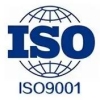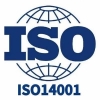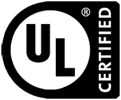What types of thermistors are included? How to choose the right thermistor?
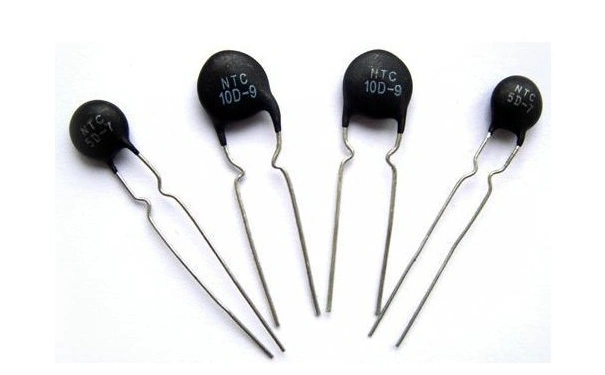
A thermistor is a sensor resistor whose resistance value changes with temperature. According to different temperature coefficients, it is divided into positive temperature coefficient thermistor and negative temperature coefficient thermistor. The resistance value of positive temperature coefficient thermistor increases with the increase of temperature, and the resistance value of negative temperature coefficient thermistor decreases with the increase of temperature. The following is a brief analysis of the classification and selection of thermistors for your reference.
Ⅰ, The classification of thermistors
1, positive temperature coefficient thermistor
Positive temperature coefficient (PTC) refers to a thermistor phenomenon or material with a sharp increase in resistance at a certain temperature and a positive temperature coefficient, which can be used exclusively as a constant temperature sensor. The material is BaTiO3 or SrTiO3 or PbTiO3 as the main component of the sintered body, in which a trace of Nb, Ta, Bi, Sb, Y, La and other oxides are added to control the valence to make it semiconducting, often referred to as semiconducting (bulk) porcelain. At the same time, it also adds Mn, Fe, Cu, Cr oxides and other additives that increase its positive resistance temperature coefficient, and uses general ceramic process forming, high temperature sintering to make titanate platinum and its solid solution semiconducting, so as to obtain positive characteristics of thermistor materials. The temperature coefficient and Curie point temperature vary with the composition and sintering conditions (especially the cooling temperature).
2, negative temperature coefficient thermistor
Negative temperature coefficient (NTC) thermistor refers to the thermistor phenomenon and material with a negative temperature coefficient that the resistance decreases exponentially as the temperature rises. The material is a semiconductor ceramic made of two or more kinds of metal oxides such as manganese, copper, silicon, cobalt, iron, nickel and zinc, which are fully mixed, formed and sintered, and can be made into a thermistor with a negative temperature coefficient (NTC). The resistivity and material constant vary with the proportion of material composition, sintering atmosphere, sintering temperature and structural state. Non-oxide NTC thermistor materials such as silicon carbide, tin selenide and tantalum nitride have also appeared.
3, critical temperature thermistor
Critical Temperature Resistor (CTR) has a negative resistance mutation characteristic. At a certain temperature, the resistance value decreases dramatically with the increase of temperature, and it has a large negative temperature coefficient. The composition material is a mixture of vanadium, barium, strontium, phosphorus and other elemental oxides sintered body, is a semi-glassy semiconductor, also known as CTR glass thermistor. The temperature changes with the addition of germanium, tungsten, molybdenum and other oxides. This is due to the incorporation of different impurities, so that the lattice spacing of vanadium oxide is different. If vanadium pentoxide changes into vanadium dioxide in an appropriate reducing atmosphere, the resistance changes rapidly and the temperature increases. If further reduced to vanadium trioxide, the change quickly disappeared. The temperature at which a sharp change in resistance occurs corresponds to the location of the sharp change in physical properties of the semi-glass semiconductor, resulting in a semiconductor-metal phase shift. CTR can be used as temperature control alarm and other applications.
Ⅱ, Choose the appropriate thermistor
1. First of all, determine the maximum ambient temperature of the protected circuit during normal operation, the working current in the circuit, the maximum voltage to be borne by the thermistor after action, and the required operation time and other parameters;
2, according to the characteristics of the protected circuit or product, select "chip type", "radial extraction type", "axial extraction type" or "surface mount type" and other different shapes of thermiors;
3, according to the maximum working voltage, select the "withstand voltage" level greater than or equal to the maximum working voltage of the product series;
4, according to the maximum ambient temperature and the working current in the circuit, select the product specification that the "maintenance current" is greater than the working current;
5. Confirm that the operation time of the thermistor of this specification is less than the time required by the protection circuit;
6, according to the data provided in the specification book, confirm that the size of this specification thermistor meets the requirements.
The Products You May Be Interested In
 |
AWCCA-50N50H50-C01-B | RX TX 1 COIL 1 LAYER 24UH 5.7A | 6426 More on Order |
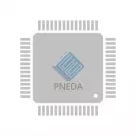 |
AMPMGFD-18.0000T3 | MEMS OSC XO 18.0000MHZ CMOS SMD | 7830 More on Order |
 |
AMPMGFC-21.0000T3 | MEMS OSC XO 21.0000MHZ CMOS SMD | 5670 More on Order |
 |
AMPMAGD-12.0000T | MEMS OSC XO 12.0000MHZ CMOS SMD | 8838 More on Order |
 |
AMPMDFA-6.7800 | MEMS OSC XO 6.7800MHZ CMOS SMD | 2754 More on Order |
 |
AST3TQ-19.200MHZ-5-T2 | XTAL OSC TCXO 19.2000MHZ LVCMOS | 2808 More on Order |
 |
AOCTQ5-X-10.000MHZ-I5 | XTAL OSC OCXO 10.0000MHZ CMOS TH | 8550 More on Order |
 |
AST3TQ53-V-26.000MHZ-5-C | XTAL OSC VCTCXO 26.0000MHZ LVCMO | 8532 More on Order |
 |
AST3TQ53-T-25.000MHZ-5-C-T2 | XTAL OSC TCXO 25.0000MHZ LVCMOS | 6588 More on Order |
 |
AX5DCF1-1966.0800C | OSC XO 1.96608GHZ 1.8V LVDS | 7578 More on Order |
 |
AX5DCF1-1124.0000T | OSC XO 1.124GHZ 1.8V LVDS | 5472 More on Order |
 |
AX5MBF3-125.0000T | OSC XO 125MHZ 2.5V CML | 3276 More on Order |
 |
ASTMHTE-125.000MHZ-ZR-E | MEMS OSC XO 125.0000MHZ LVCMOS | 7542 More on Order |
 |
ASTMHTA-10.000MHZ-XC-E-T | MEMS OSC XO 10.0000MHZ LVCMOS | 8640 More on Order |
 |
ASTMUPCD-33-10.000MHZ-LJ-E-T | MEMS OSC XO 10.0000MHZ LVCMOS | 4410 More on Order |
 |
ABM13W-45.0000MHZ-8-D2Z-T5 | CRYSTAL 45MHZ 8PF SMD | 3330 More on Order |
 |
ABM13W-45.0000MHZ-7-JH7Y-T5 | CRYSTAL 45MHZ 7PF SMD | 6786 More on Order |
 |
ABM13W-40.0000MHZ-6-N2G-T5 | CRYSTAL 40MHZ 6PF SMD | 4194 More on Order |
 |
ABSM2-32.768MHZ-4-T | CRYSTAL 32.7680MHZ 18PF SMD | 7326 More on Order |
 |
ABM12W-32.0000MHZ-6-B2U-T3 | CRYSTAL 32.0000MHZ 6PF SMD | 8244 More on Order |
 |
ABM10W-42.0000MHZ-6-B1U-T3 | CRYSTAL 42.0000MHZ 6PF SMD | 3186 More on Order |
 |
ABM8W-13.4000MHZ-7-J2Z-T3 | CRYSTAL 13.4000MHZ 7PF SMD | 7308 More on Order |
 |
ABM11W-48.0000MHZ-7-D1X-T3 | CRYSTAL 48.0000MHZ 7PF SMD | 8910 More on Order |
 |
ABM10AIG-20.000MHZ-4Z-T3 | CRYSTAL 20MHZ 10PF SMD | 59484 More on Order |

